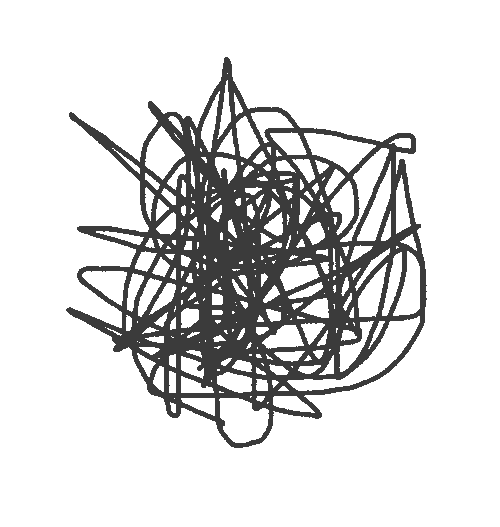Theory and Application of hybrid Classical-Quantum OptimizATION aLGORITHMs
Ludmila Botelho
Institute of Theoretical and Applied Informatics, Polish Academy of Sciences

Analog computers
Introduction

Hybrid (analog + digital) computers
Introduction
Digital computers

Introduction
Quantum Computer

Introduction
Quantum Computer
Introduction

# WHAT IS A QUBIT?
$$\vert \psi \rangle = \begin{bmatrix} \alpha \\ \beta \end{bmatrix} $$
\(|\alpha|^2+|\beta|^2=1\)
(\(\mathcal{l}_2\)-norm)
\(\alpha,\beta\in \mathbb{C}\)

# QUANTUM MECHANICS RECAP



Quantum computing devices
Noisy
Intermediate-
Scale
Quantum computing






Where is \(\omega\)?

N
What are prime factors of
?

What can we do?
Hybrid solution


What can we do?
Adiabatic Quantum Computing
Quantum Annealing
Gate-Based Quantum Computing



$$ H(t) = \left(1-\frac{t}{T}\right)H_0+ \frac{t}{T}H_P $$
Quantum annealing
Quantum Annealing
$$ H_P = - \sum_{i > j} J_{ij}Z_i Z_j - \sum _i h_iZ_i, $$
2-Local Ising model
Pauli \(Z\) Gates on \(i\)-th qubit
Ground state = optimal solution
NP-hard!

Proposition: Find the minimum energy in a landscape
Quantum Annealing

- Can be encoded in Binary Values
Ising model
- Mathematical model to describe magnetization
\( s_i \in \{-1,+1\} \)
\( s_i \leftrightarrow x_i = \frac{1-s_i}{2} \)
\( x_i \in\{0,1\} \)
quadratic unconstrained binary optimization
-
Minimizing quadratic functions
$$ y=x^TQx $$
-
Penalty Method
$$ \text{min } y=f(x) $$
$$ \text{subject to: } x_1 +x_2 + x_3= 1 $$
$$\text{min }y=f(x)+P\left(\sum_{i=1}^3 x_i -1\right)^2 $$
Binary variables
Constants
Initialize the annelear: \(|+^n\rangle\)
$$ H_{QA}(t) = g(t/ \tau )H_{\text{mix}}+ h(t/ \tau)H$$
Adiabatic evolution
Ground state of H (hopefully)
$$ | 0110\dots 010\rangle$$
Ground state of:
$$ H_{\text{mix}} = \sum_i X_i$$
Quantum Approximate Optimization Algorithm
\(g(t/ \tau )H_{\text{mix}}+ h(t/ \tau)H\)
Trotter Formula
$$|p,r\rangle = \prod_{i=1}^k \exp(-\mathrm{i} p_iH_{\rm mix})\exp(-\mathrm{i} r_iH) |+^n\rangle $$

Inspired by Quantum Annealing

Quantum Approximate Optimization Algorithm
First part: theory
How to improve QAOA?
-
Error mitigation
-
Better search in the feasible space
- By using different enconding schemes
-
By homotopic optimization
ChApter 3
ChApter 4
Improving QAOA


Traveling salesperson problem
$$ A\sum_{t} \left(\sum_v b_{tv} -1\right)^2 + A\sum_{v} \left(\sum_t b_{tv} -1\right)^2 + B\sum_{t,v,w} W_{v,w}b_{t,v}b_{t+1,w}$$
QUBO formulation for n cities

Traveling salesperson problem
Cost of route:
\(\pi: \{ 0,\cdots,n-1\} \rightarrow \{ 0,\cdots,n-1\} \)
\(\sum_{t=0}^{n-1}W_{\pi(t),\pi(t+1)} =\sum_{t,v,w}W_{v,w} \delta(\pi(t),v) \delta(\pi(t+1),w) \)
city visited at time \( t\)
$$0$$
$$1$$
$$2$$
$$3$$
$$4$$
\(W_{1,2}\)
$$0$$
$$1$$
$$2$$
$$3$$
$$4$$
\(W_{1,2}\)
time \( t\)
$$0$$
$$1$$
$$2$$
$$3$$
$$4$$
$$00001 $$
$$10000 $$
$$000$$
$$100$$
binary
one-hot
$$00010 $$
$$00100 $$
$$01000 $$
$$001$$
$$010$$
$$011$$
QUBO
HOBO
Encondings?
How many qubits FOR QUBO?
- Required number of qubits \( \rightarrow \; \; n^2\)
- Number of routes \(\;\;\rightarrow \;\; n!\)
Overlap with feasible space can be reduced!
- Optimal solution encoding \( \rightarrow \; \; \log_2(n!) \sim n\log_2n\)
\(n^2 \; \rightarrow \;n!/2^{n^2} \approx2^{-n^2}\)
\(n\log_2 n \; \; \rightarrow \; n!/2^{n\log_2 n} \approx 2^{-\Theta(n)}\)
VS
Number of qubits can be reduced!
Adam Glos, Aleksandra Krawiec, and Zoltán Zimborás. "Space-efficient binary optimization for variational computing." npj Quantum Information 8, 39 (2022)
Different encodings - Different circuits
HOBO
QUBO
HOBO
- Mid-circuit error mitigation
- It is efficient to implement
- Mixed-encoding QAOA works in a smaller space
Available for Quantum Alternating Operator Ansatz
Hypothesis
Possible explanation
We detect transfer between infeasible and feasible space

Combining encondings
\(|0 \rangle\)
{
\(|0 \rangle\)
{
\(|0 \rangle\)
{
\(|0 \rangle\)
{
\(|0 \rangle\)
}
\(|0 \rangle\)
}
\(|0 \rangle\)
}
\(|0 \rangle\)
}
\(V\)
\(V^\dagger\)
QUBO
\(V\)
\(V\)
\(V\)
\(V^\dagger\)
\(V^\dagger\)
\(V^\dagger\)
\(H_{\text{mix}}\)
\(H_{\text{mix}}\)
\(H_{\text{mix}}\)
\(H_{\text{mix}}\)

Success probability of measuring the quantum state on the feasible space (left). The area spans the mean energy \( \pm \) standard deviation over 40 instances of TSP. Simulation were done for TSP instances with four cites.


My contribuition: circuit design and code
EC-QAOA
Initialize the quantum state
\(|0 \rangle\)
{
\(|0 \rangle\)
{
\(|0 \rangle\)
{
\(|0 \rangle\)
{
\(|0 \rangle\)
}
\(|0 \rangle\)
}
\(|0 \rangle\)
}
\(|0 \rangle\)
}
\(V\)
\(V^\dagger\)
QUBO
\(V\)
\(V\)
\(V\)
\(V^\dagger\)
\(V^\dagger\)
\(V^\dagger\)
\(H_{\text{mix}}\)

\(H_{\text{mix}}\)
\(H_{\text{mix}}\)
\(H_{\text{mix}}\)

Combining encondings - Circuit design
Error mitigation via post-selection
\(V\)
\(V^\dagger\)
QUBO
\(V\)
\(V\)
\(V\)
\(V^\dagger\)
\(V^\dagger\)
\(V^\dagger\)
\(H_{\text{mix}}\)
\(H_{\text{mix}}\)
\(H_{\text{mix}}\)

\(H_{\text{mix}}\)
Post-Selection
\(V\)
\(V^\dagger\)
QUBO
\(V\)
\(V\)
\(V\)
\(V^\dagger\)
\(V^\dagger\)
\(V^\dagger\)
\(H_{\text{mix}}\)
\(H_{\text{mix}}\)
\(H_{\text{mix}}\)

\(H_{\text{mix}}\)
\(V\)
\(V^\dagger\)
QUBO
\(V\)
\(V\)
\(V\)
\(V^\dagger\)
\(V^\dagger\)
\(V^\dagger\)

Mid-Circuit Measurement
PS
PS
PS
PS
APPLICABLE FOR OTHER QAOA SCHEMES!
Error mitigation via post-selection
Results - ERROR MITIGATION

The efficiency of mid-circuit postselection through compression against final circuit postselection only. The analysis was done with XY-QAOA for TSP. The subplots (a)–(c) are for three cities (four qubits), and (d)–(f) are showing the results for four cities (nine qubits). Some lines and corresponding areas are not visible because the values are very close to zero, in particular for γ = 0.01 for (f).
Ludmila Botelho, Adam Glos, Akash Kundu, Jarosław Adam Miszczak, Özlem Salehi, and Zoltán Zimborás, Error mitigation for variational quantum algorithms through mid-circuit measurements, Phys. Rev. A 105, 022441 (2022)
Results - ERROR MITIGATION
Acceptance probability, defined as the probability of accepting the circuit run. The lines represent the mean value of the relative acceptance probability over 100 samples. The (hardly visible) areas represent the samples between 10th and 90th percentile. The subplots (a)–(c) show the results for three cities instances, and (d)–(f) are showing the results for four cities.

Results - ERROR MITIGATION
Ludmila Botelho, Adam Glos, Akash Kundu, Jarosław Adam Miszczak, Özlem Salehi, and Zoltán Zimborás, Error mitigation for variational quantum algorithms through mid-circuit measurements, Phys. Rev. A 105, 022441 (2022)
Effect of postselection on XY-QAOA applied on TSP. In the first column, we simply correct the optimal angles obtained throughregular optimization with the postselection applied at every two layers. In the second column, we compare optimization with and withoutmid-circuit postselection, starting with the same angles. Finally, in the last column, we take the optimal angles obtained through regularoptimization and repeat the optimization with mid-circuit postselection. The analysis was done for random X noise with γ = 0.002.

What did we learn?
- New concept: Mid-circuit error mitigation
- Number of qubits and depth comparable to other QAOA classes
- EC-QAOA works effectively in a smaller subspace
Alternative strategy: Homotopic maps

Energy landscape

Text
Hamiltonian-Oriented Homotopy QAOA

Hamiltonian-Oriented Homotopy QAOA

My contributions: writing, coding and experiments
Akash Kundu, Ludmila Botelho, and Adam Glos, Hamiltonian-oriented homotopy quantum approximate optimization algorithm, Phys. Rev. A 109, 022611 (2024)
Results
Performance

What did we learn?
- The method does not increase the impact of the noise
- We numerically confirm that our method outperforms state-of-the-art approaches
- Our approach is well-motivated for nonlinear optimized functions

And now for something completely different
Second part: Applications
Can we USE quantum annealing for creative tasks?



"...might compose elaborate and scientific pieces of music of any degree of complexity or extent"
Ada Lovelace
Charles Babbage
Music Generation


4
1
rest
measure
Durations
2
Pitches
C
D
A
E
G
F
B
C
Music Generation
$$\sum_{j \in P} x_{i,j} = 1$$
How to define the binary variables?
$$\left ( 1- \sum_{j \in P} x_{i,j} \right )^2$$
- Pitches
- Rules about consecutive notes
$$x_{i,C} + x_{i+1,D} \leq 1$$
$$x_{i,C} + x_{i+1,C} + x_{i+2,C} \leq 2 $$
$$P=\{p_1,p_2,\dots,p_k \}$$
\(x_{i,j}\) for \(i \in [n]\) and \(j \in P\)
$$P=\{\mathtt{C}, \mathtt{D}, \mathtt{E}, \mathtt{G}\}$$


Melody Generation
Optimization
$$ -\sum_{ \substack{i\in [n-1] \\ j,j' \in P}} W_{j,j'} x_{i,j} x_{i+1,j'} $$
weights
Exemple: Ode to Joy excerpt
$$W_{F\#4,E4} = 2, $$

$$W_{F\#4,F\#4} = 2,$$
$$W_{F\#4,G4} = 1$$
melody Generation


$$\sum_{\substack{i \in [n] \\ j \in D}} d(j)y_{i,j} = L$$
- Duration of notes
Rhythm Generation
$$ \sum_{j \in D} y_{i,j} = 1$$
$$D = \{1,2,3,4\}$$
$$j \in D$$

Harmonization

$$\sum_{j \in P} x_{i,j} = 3$$
$$(1-x_{i,p_{i_j}})$$

G
E
D
G
B
B
G

Ashish Arya, Ludmila Botelho, Fabiola Cañete, Dhruvi Kapadia and Özlem Salehi, Applications of Quantum Annealing to Music Theory. Quantum Computer Music, Springer: Methods and Advanced Concepts, pages 373-406 (2022)

Boléro (Ravel, Maurice)

?
?
?
?
?
?
?
Monophonic
Polyphonic
Music is complex
-
Phrase Identification

But also adaptable!
Huang, Jiun-Long, Shih-Chuan Chiu, and Man-Kwan Shan. "Towards an automatic music arrangement framework using score reduction." ACM Transactions on Multimedia Computing, Communications, and Applications (TOMM) 8.1 (2012): 1-23.
But also adaptable!
-
Phrase Identification

But also adaptable!
But also adaptable!
Job Scheduling
But also adaptable!
Job Scheduling
But also adaptable!
Job Scheduling

What is relevant?
QUBO Formulation
- Variables and objective function
- Entropy
- Pitch and rhythm
- Maximize information
$$x_{ij} =\begin{cases}1,& \text{$j$'th phrase of track $i$ is selected}\\ 0, & \text{otherwise.}\end{cases} $$
$$- \sum_{i=1}^N\sum_{j=1}^{P_i} e(p_{ij})x_{ij}$$
$$E(s) = - \sum_{i=1}^N P(x_i)\ln P(x_i)$$
QUBO Formulation
- Constraints
$$x_{ij} = 1 \iff m_{ik}=1 k \in S_{ij}$$
$$\sum_{i=1}^N m_{ik} = M \ \ \text{for} \ \ k=1,\dots,K $$
Set of measures in phrase \(j\) of \(i\)’th track
Number of measures
Number of tracks after reduction
- Similar to fixed interval scheduling
binary variable
Results

Experiment results for entropy varying chain strength and annealing times. The dashed lines correspond to the simulated annealing best result and the dotted lines to the hybrid solver solution. The square, round, and star dots correspond to chain strength values 0.1, 0.2, and 0.3, respectively
My contributions: main concept, QUBO formulation, code, experiments...
Ludmila Botelho and Özlem Salehi, Fixed interval scheduling problem with minimal idle time with an application to music arrangement problem, arXiv:2310.14825Whad did we learn?
- Music generation can be mapped to a QUBO problem
- Music reduction can be seen as a special case of job scheduling
- It is hard to find proper encodings to this problem
Conclusions
- Quantum Annealing can provide solutions for music composition and reduction formulated as optimization problems
None of the methods investigated shows advantage over classical algorithms !
- The variations of QAOA showed improvement compared with state of the art version
Ansers for the reviwers

Frankstein thesis
- This is my PhD work
- Common data structure and problem modeling via QUBO
- Latest of the quantum technology at the time, which is a combination of classical + quantum computing algorithms.
I decided to put those chapter toghether because:
general applicability
- Railway optmization (not included in this thesis) -> arxiv:2309.06763
- Quantum Chemistry (working on it but in a private company)
- Quantum Annealing depends a lot of QUBO formalism (still)
Fault tolerant qC
- In general, QAOA or HOBO can still help to construct shorter and/or shallow circuits
- PROG-QAOA variant could fit in this case
Re-run experiments?
It is a good idea! But...
- Access to the machines is more expensive and/or bureaucratic now
- Code will require major refactoring due changes in IBM and D-Wave APIs
Grammar and orthography corrections
I'll make it available on my github repository and/or ArXiV. You can track the changes for the new version there.
other works
